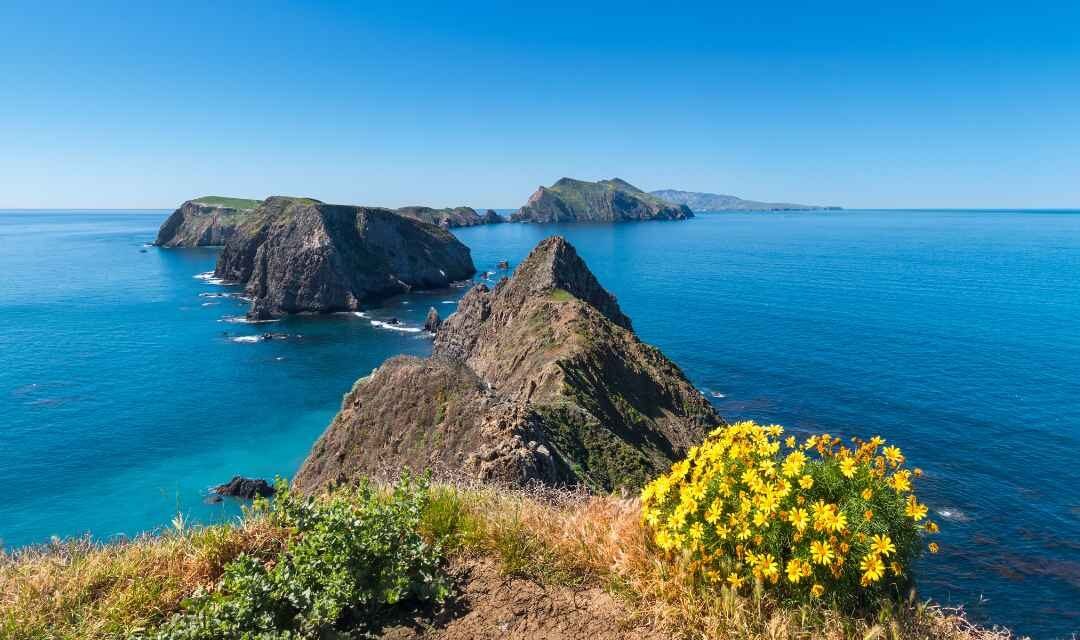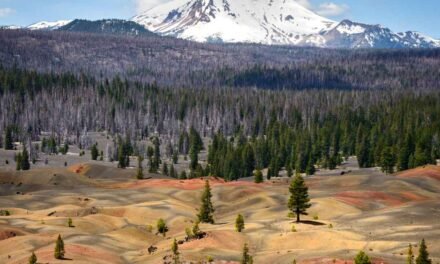Overview of Channel Islands National Park
Channel Islands National Park, established in 1980, is a captivating and diverse destination located off the coast of Southern California. The park encompasses five of the eight Channel Islands – Anacapa, Santa Cruz, Santa Rosa, San Miguel, and Santa Barbara – and the surrounding marine environment. The park is renowned for its unique flora and fauna, many of which are found nowhere else in the world, as well as its spectacular sea caves, dramatic cliffs, and pristine beaches. With opportunities to explore the islands’ distinctive ecosystems, enjoy recreational activities, and learn about the rich history and cultural heritage, Channel Islands National Park offers a truly unforgettable experience.
Channel Islands National Park Location
Channel Islands National Park is situated approximately 11 to 60 miles off the coast of Southern California, between the cities of Santa Barbara and Ventura. Access to the park is by boat or small aircraft, with boat transportation provided by the authorized concessionaire, Island Packers. Flights are available through Channel Islands Aviation, which services Santa Rosa Island. The park’s mainland visitor center is located in Ventura Harbor, where visitors can learn about the park’s natural and cultural history before embarking on their journey to the islands.
Channel Islands National Park Things to Do
Channel Islands National Park offers a wide range of activities for visitors to enjoy, including hiking, kayaking, wildlife viewing, and more. Some of the most popular things to do include:
Hiking
The park features an extensive network of hiking trails that traverse diverse landscapes, from coastal bluffs and sandy beaches to rolling hills and rugged canyons. Each island offers unique hiking opportunities, such as the Anacapa Island Light Station and Inspiration Point on Anacapa Island, the Scorpion Ranch area on Santa Cruz Island, and the Torrey Pines and Lobo Canyon on Santa Rosa Island.
Kayaking
Channel Islands National Park is renowned for its spectacular sea caves and rocky shorelines, which provide excellent opportunities for kayaking. Santa Cruz Island, in particular, is a popular destination for kayakers, with numerous sea caves to explore, such as the famous Painted Cave. Guided kayak tours are available through authorized concessionaires.
Wildlife Viewing
The park is home to a diverse array of wildlife species, including the endemic island fox and island scrub-jay, as well as numerous marine mammals, such as seals, sea lions, and whales. The best times to spot marine mammals are during the spring and fall migrations, while seabirds can be observed nesting on the islands during the spring and summer months.
Snorkeling and Diving
The park’s surrounding marine environment boasts vibrant kelp forests, rocky reefs, and shipwrecks, providing excellent opportunities for snorkeling and diving. Anacapa and Santa Cruz Islands are particularly popular for snorkeling, while experienced divers can explore deeper waters and offshore sites.
Channel Islands National Park Itineraries
To make the most of your visit to Channel Islands National Park, consider planning your trip around one of these suggested itineraries:
One-Day Visit
A one-day visit to Channel Islands National Park should focus on exploring one island, such as Anacapa or Santa Cruz. Start your day with a guided tour or ranger program to learn about the island’s unique flora and fauna, followed by hiking or wildlife viewing. In the afternoon, enjoy a picnic lunch and relax on the beach, or partake in water activities such as snorkeling or kayaking.
Two-Day Visit
With a two-day itinerary, you can explore two of the park’s islands. On the first day, visit Anacapa Island and hike to the lighthouse and Inspiration Point, while also enjoying the island’s birdwatching opportunities. On the second day, head to Santa Cruz Island and hike the trails around Scorpion Ranch, explore the sea caves by kayak, or snorkel in the kelp forests. Camping is available on both islands for an overnight stay.
Three-Day Visit or Longer
For a more comprehensive exploration of Channel Islands National Park, plan a three-day or longer visit. This allows you to experience multiple islands, such as Santa Rosa Island and its stunning Torrey Pines and Lobo Canyon, or the remote and wild San Miguel Island. With more time, you can also participate in ranger-led programs, such as guided hikes, tidepool walks, and cultural history talks.
Best Season to Visit Channel Islands National Park
Channel Islands National Park is a year-round destination, but the best time to visit depends on your interests and preferred activities. The spring months (March to May) are ideal for wildflower viewing and birdwatching, while the summer months (June to August) offer the warmest weather and calmer seas, making it perfect for water-based activities such as kayaking and snorkeling. The fall months (September to November) are generally less crowded and offer excellent whale watching opportunities, as well as mild temperatures for hiking and other outdoor activities. Winter (December to February) can be cooler and more unpredictable in terms of weather, but it is also the time when migrating gray whales can be spotted off the coast.
Channel Islands National Park Weather
The park experiences a Mediterranean climate, characterized by mild winters and warm summers. Temperatures on the islands range from an average of 50°F to 65°F (10°C to 18°C) during the winter months and 60°F to 75°F (16°C to 24°C) in the summer. The marine environment can create fog and sudden weather changes, so it is essential to be prepared for variable conditions when visiting the park. Layered clothing, including a wind-resistant and waterproof outer layer, is recommended for all seasons.
Channel Islands National Park Hotels and Camping
While there are no hotels or lodges within Channel Islands National Park, there are several options for overnight stays, including campgrounds and nearby accommodations on the mainland.
Camping
Camping is available on all five islands within the park. Each island has designated campgrounds with basic facilities, such as picnic tables, food storage lockers, and pit toilets. Campsites must be reserved in advance through Recreation.gov, and visitors are required to bring their own camping gear, food, and water.
Mainland Accommodations
Visitors seeking hotel accommodations can find a range of options in the nearby cities of Ventura and Santa Barbara. These coastal cities offer a variety of lodging choices, from budget motels to luxury resorts, as well as easy access to the park’s mainland visitor center and boat transportation services.
Channel Islands National Park Restaurants
There are no restaurants or food services within Channel Islands National Park. Visitors should plan to bring their own food and water for the duration of their visit. It is important to practice Leave No Trace principles and pack out all trash and food waste. On the mainland, the cities of Ventura and Santa Barbara offer a variety of dining options, including local seafood, international cuisine, and farm-to-table restaurants.
Channel Islands National Park Wildlife and Plants
The park’s isolated location and diverse habitats have given rise to a remarkable array of wildlife and plant species, many of which are found nowhere else on Earth. Some of the most notable species include:
Wildlife
– Island Fox: This small, endemic fox species can be found on six of the eight Channel Islands. Each island has its own unique subspecies, adapted to the specific environment of that island.
– Island Scrub-Jay: Found exclusively on Santa Cruz Island, the island scrub-jay is a larger, brighter blue cousin of the mainland western scrub-jay.
– Marine Mammals: The park’s waters are home to numerous marine mammals, such as California sea lions, harbor seals, northern elephant seals, and various whale species, including gray, blue, and humpback whales.
– Seabirds: The islands provide essential nesting and breeding habitats for a variety of seabirds, including the rare ashy storm-petrel, Cassin’s auklet, and Scripps’s murrelet.
Plants
– Island Oak: This unique species of oak is found only on the Channel Islands, with the largest concentration occurring on Santa Cruz Island.
– Island Ironwood: Endemic to the Channel Islands, the island ironwood is a slow-growing, evergreen tree that plays a crucial role in the islands’ ecosystems.
– Giant Coreopsis: This large, bush-like plant produces vibrant yellow flowers and is found on several of the Channel Islands, creating a stunning display during the spring months.
Channel Islands National Park History
The history of Channel Islands National Park is deeply intertwined with the Native American peoples who have inhabited the islands for thousands of years, as well as the European explorers and settlers who arrived later.
The Chumash people, one of the indigenous groups that lived on the islands, established a complex society based on marine resources, trade, and craftsmanship. They developed advanced maritime technology, such as the tomol (plank canoe), which allowed them to travel between the islands and the mainland. Their presence on the islands dates back at least 13,000 years, with many archaeological sites providing insight into their rich culture and way of life.
The first Europeans to encounter the islands were the Spanish explorers, led by Juan Rodríguez Cabrillo, who arrived in 1542. The Spanish established missions on the mainland and introduced new plants, animals, and diseases to the region, which had a significant impact on the indigenous populations.
Throughout the 19th and 20th centuries, the islands were used for various purposes, including ranching, fishing, and military installations. The park’s establishment in 1980 aimed to protect the unique ecosystems, cultural resources, and scenic beauty of the Channel Islands for future generations to appreciate and enjoy.
Channel Islands National Park Geology
The geology of Channel Islands National Park is characterized by a fascinating array of landforms, such as sea caves, volcanic cliffs, and marine terraces, which have been shaped by millions of years of geological processes. The islands were formed by the tectonic forces associated with the Pacific and North American plates, as well as volcanic activity and erosional processes.
The islands are composed primarily of sedimentary rock, such as sandstone and shale, which were deposited in layers over millions of years. Volcanic activity during the Miocene epoch also contributed to the formation of the islands, with basaltic lava flows and volcanic ash layers present on several of the islands.
Erosion by wind, water, and waves has played a significant role in shaping the islands’ landscapes, creating dramatic sea cliffs, sea caves, and arches. Marine terraces, which represent ancient shorelines, are visible on many of the islands, providing evidence of the ongoing tectonic uplift and sea level changes that have influenced the islands’ topography over time.
Conclusion
Channel Islands National Park offers a unique and unforgettable experience for visitors, showcasing a diverse range of ecosystems, recreational activities, and opportunities to learn about the area’s rich history and cultural heritage. Whether you’re hiking among the island’s endemic flora and fauna, kayaking through spectacular sea caves, or exploring the remnants of the past, the Channel Islands provide a truly exceptional adventure. By following this comprehensive visitor’s guide, you’ll be well-equipped to make the most of your journey to this extraordinary national park.





